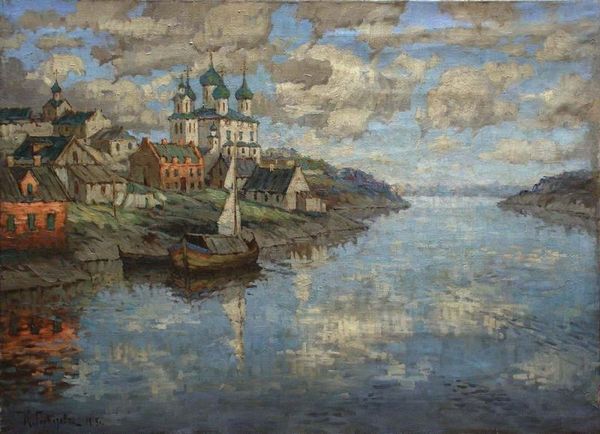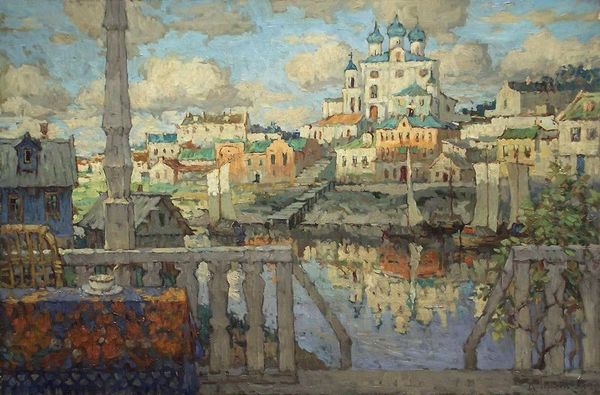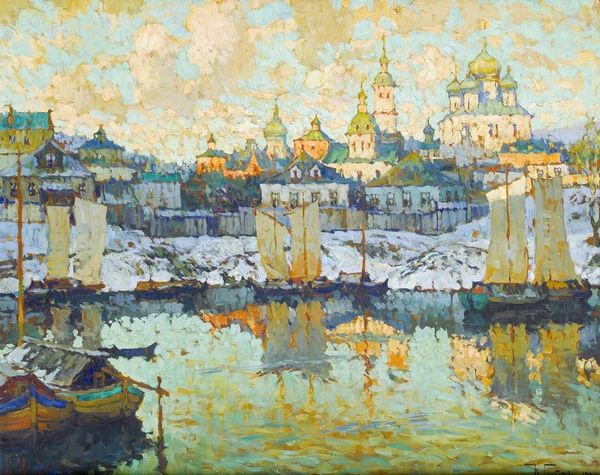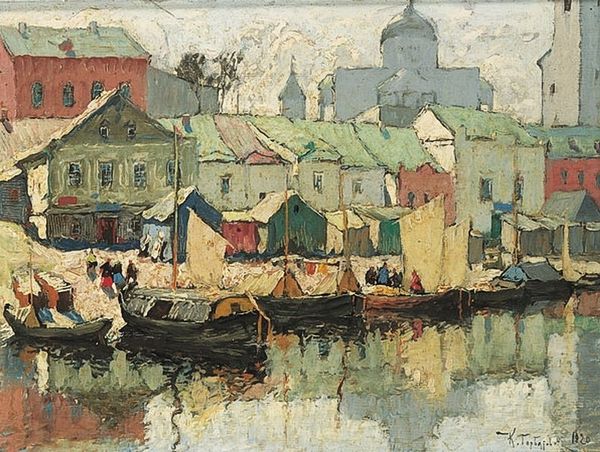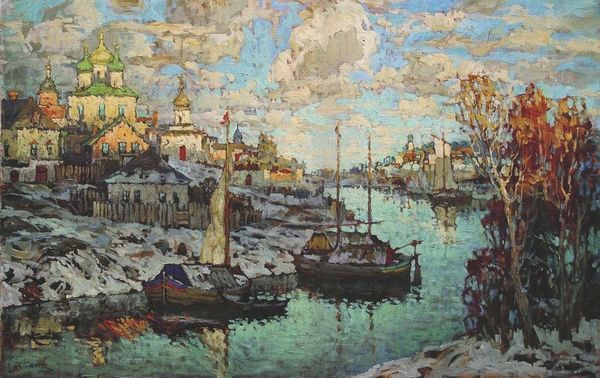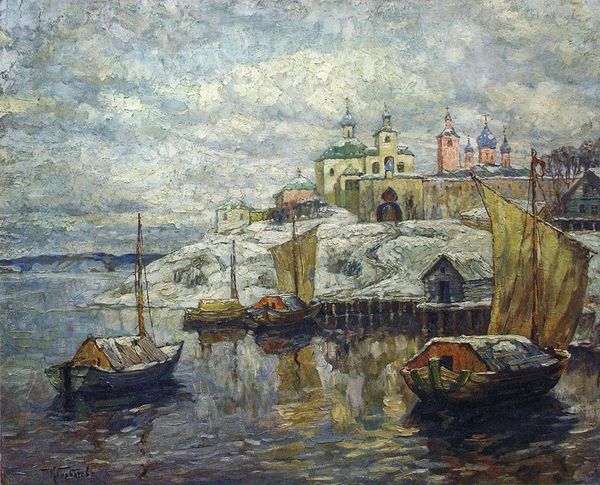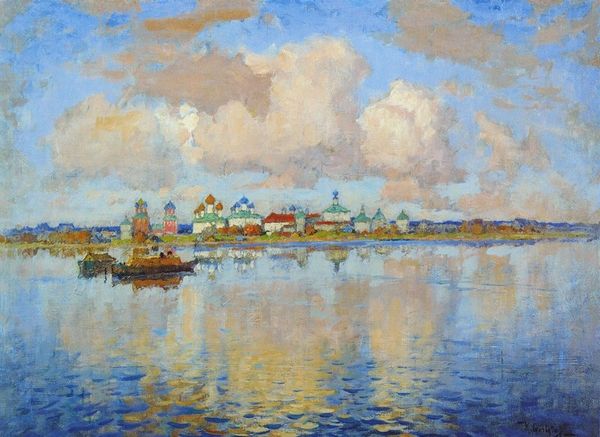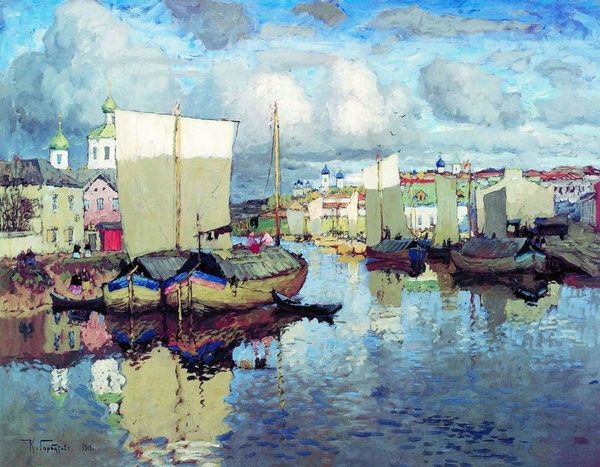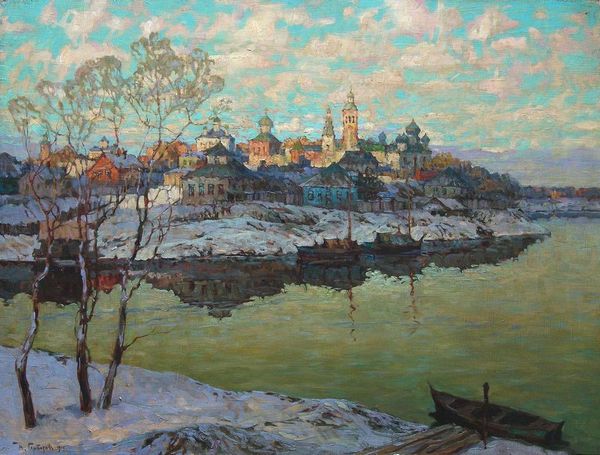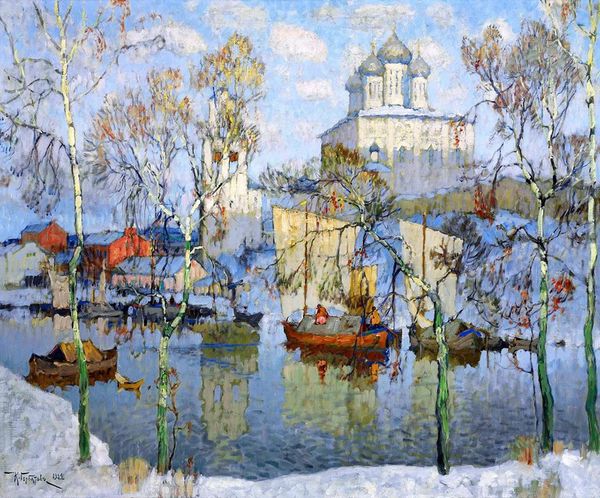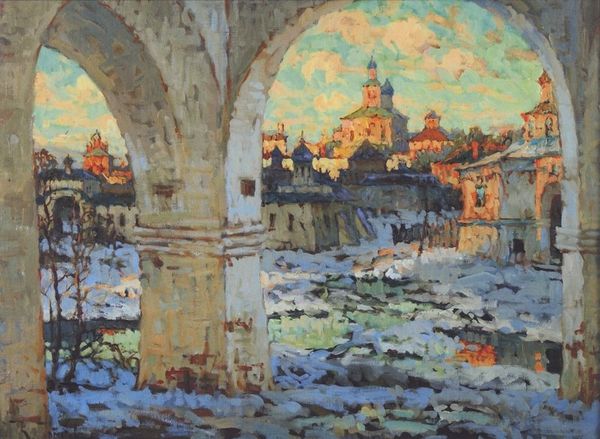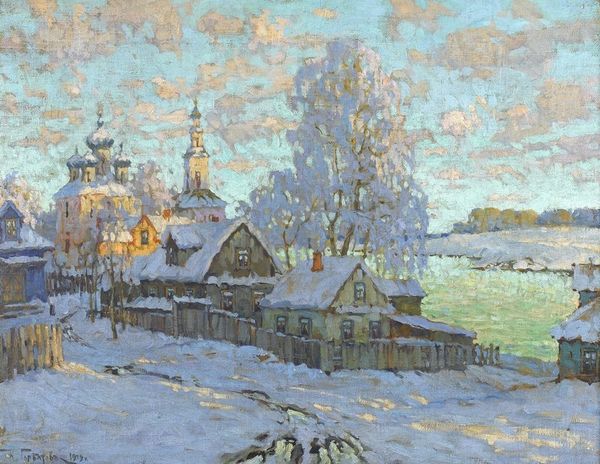
Copyright: Public domain
Curator: Look at this artwork—it's "Pier in Novgorod" by Konstantin Gorbatov, painted in 1919 using oil paints. A wonderful example of the Russian avant-garde, capturing a cityscape in broad strokes. Editor: It's... muted, almost faded, despite being an oil painting. There's a pervasive quietness about it, like the world is holding its breath under the snow. The palette feels incredibly restricted—mostly greys, whites, blues, and then that sudden pop of reddish-brown from the boats and a few of the buildings. What was it like procuring materials then, and what are they like now? Curator: The reflections in the water really capture my imagination. The artist masterfully used impasto. You can feel the texture when observing how the light bounces back. The entire city seems to be floating between water and sky! It almost seems that he tried to express the weight and lightness with such strokes. Editor: Indeed, I would guess getting pigment like this was a difficult, maybe a chemical heavy process in 1919. I mean, imagine the conditions—post-revolution Russia—where did Gorbatov source these? This would not have been like walking into your neighborhood art shop, it may have involved significant, hard labour or maybe relying on trading and bartering for each pigment and medium? Curator: It gives you pause to imagine the city in the Russian avant-garde movement. I believe that Gorbatov saw past the mundane daily struggles by elevating a simple cityscape into something almost spiritual. There’s a real feeling of serenity amidst a tangible chill. It evokes that longing for a golden past—an idyllic, almost dreamlike rendering of a familiar place. Editor: I think he does highlight how much labour goes into building this setting that makes the picture. It all must be gathered and collected to create an image of peace. I wonder, was the golden age accessible to everyone? Was labour affordable? Was he showing this contrast between hard work and peaceful output? Curator: Perhaps the genius lies precisely in this ambiguity, that both the visible and the invisible contribute to its charm. What a way to subtly ask such relevant questions! It’s both historical and timeless. I believe this is why it speaks to me, beyond just being an artwork. Editor: This tension that Gorbatov expresses certainly shows what we value and the cost of how that value comes to be. Curator: Beautifully observed.
Comments
No comments
Be the first to comment and join the conversation on the ultimate creative platform.
